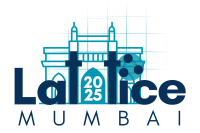Speaker
Description
For decades, the lattice community has successfully extracted fundamental properties of non-abelian gauge theories, like QCD, using the Euclidean path integral formalism and Monte Carlo methods. However, the advent of quantum computation, quantum simulation, and advanced tensor network methods has created new opportunities and demands for a Hamiltonian approach, which is better suited for describing real-time dynamics and operating directly on states belonging to the physical Hilbert space.
In this talk, we review some of these recently developed formalisms that are of active interest to the lattice community. Following this overview, we provide a detailed exposition of the Loop-String-Hadron (LSH) framework and demonstrate how LSH reformulates the theory in an explicitly gauge-invariant basis of electric flux loops and open strings connecting matter fields, which naturally map to hadronic states. This choice of basis offers a physically intuitive and computationally efficient Hilbert space truncation. We also highlight its direct applications, highlighting how eliminating redundant gauge degrees of freedom makes exact diagonalisation and tensor network calculations feasible to study real-time dynamics, provide insights about thermalization properties, enable mapping of physical degrees of freedom on analog and digital quantum hardware - followed by quantum simulation of dynamics. We will also present how the basis more effectively captures the entanglement structure of the theory.
| Parallel Session (for talks only) | Plenary talk |
|---|

